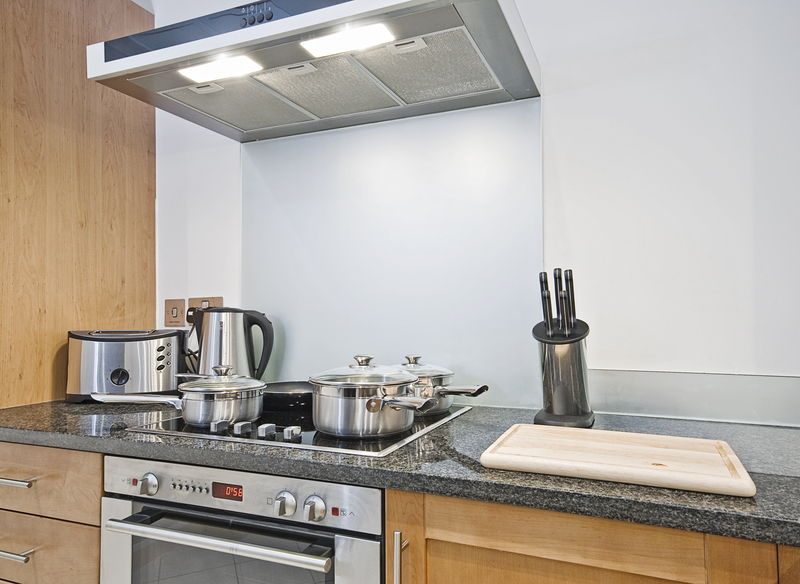Ultimate Guide to Dismiss Damp Smells
Posted on 17/06/2025
Damp smells can be a persistent and unpleasant problem for many homeowners and renters. Whether you detect a musty odor in your basement, bathroom, wardrobe, or entire house, getting rid of these stale, moldy scents is crucial for both comfort and health. In this comprehensive guide, you'll discover effective strategies to eliminate damp odors, ensure fresh air throughout your home, and prevent the return of those unwelcome smells. Read on to learn everything you need to know about how to get rid of damp smells once and for all.
Understanding Damp Smells: What Causes Them?
Before you can effectively remove damp odors from your living space, it's essential to understand what causes them. Damp, musty smells are most often the result of:
- Excess moisture in the air or materials within your home, such as walls, floors, carpets, and furniture.
- Mold and mildew growth, typically in high-humidity areas or places with poor ventilation.
- Leaks or water damage that go undetected and provide a habitat for odor-causing bacteria and fungi.
- Poor ventilation that traps humid air and allows organic smells to accumulate.
Identifying the sources of damp and musty odors in your home is the first step towards a fresher environment. Now, let's move on to targeted methods to dismiss damp smells efficiently and permanently.

Step-by-Step: How to Eliminate Damp Odors from Your Home
1. Locate and Fix Sources of Moisture
The foundation for banishing damp smells lies in solving the underlying moisture issue. Use the following checklist:
- Check for leaks: Inspect plumbing, windows, roofs, and basements for any water leaks.
- Monitor humidity levels: Ideally, your indoor humidity should be between 30-50%. A hygrometer can help.
- Improve drainage: Ensure gutters and downspouts direct water away from the property's foundation.
- Seal cracks and gaps: Repair any crevices in walls, floors, or around windows and doors.
2. Boost Ventilation
Proper airflow is key to getting rid of musty odor. Here's how to increase ventilation:
- Open windows and doors: When weather allows, let fresh air circulate.
- Use exhaust fans: Especially in kitchens, bathrooms, and laundry rooms.
- Install vents or air bricks: In problem areas like basements or crawl spaces.
- Consider an air purifier: To filter out odor-causing particles and improve indoor air quality.
3. Clean and Remove Mold & Mildew
To completely eliminate the musty smell, you must tackle any visible (and hidden) mold or mildew.
- Scrub affected surfaces: Use a solution of 1 part distilled white vinegar to 1 part water or a commercial anti-mold cleaner. Wear gloves and a mask for safety.
- Clean soft furnishings: Wash affected curtains, sofa covers, and fabric with hot water and add a cup of white vinegar to the rinse cycle to help neutralize odors.
- Steam clean carpets: Carpet fibers can trap mold spores, so deep cleaning is essential.
- Dispose of unsalvageable items: If any porous items like old drywall or insulation are badly affected, it's best to replace them.
4. Use Dehumidifiers and Moisture Absorbers
Reduce excess moisture and prevent damp odors from forming by applying the following solutions:
- Place dehumidifiers: In high-humidity spots such as basements and laundry rooms.
- Use moisture absorbers: Chemical products like silica gel, activated charcoal, or calcium chloride can trap dampness in wardrobes and cabinets.
- Commercial damp traps: These are available for both large rooms and smaller enclosed spaces.
Natural Remedies to Remove Damp Smells
Baking Soda
Baking soda is a classic and inexpensive solution for dismissing persistent damp smells:
- Sprinkle baking soda directly onto carpets, rugs, and upholstery. Leave it overnight and vacuum thoroughly.
- Place open containers of baking soda in cupboards, wardrobes, or corners where musty odors are present.
White Vinegar
White vinegar's acidic properties help neutralize odors:
- Fill bowls with vinegar and leave them in the affected room for 24-48 hours to absorb unpleasant smells.
- Mist vinegar onto hard surfaces and wipe down after 15 minutes.
Activated Charcoal
Activated charcoal is highly absorbent and effective against musty room odors. Use:
- Charcoal air-purifying bags--in wardrobes, shoe racks, and small spaces.
- Loose activated charcoal in open containers distributed throughout the room.
Essential Oils
Once you've dealt with the source, use essential oils to refresh your home's scent naturally:
- Add a few drops of eucalyptus, tea tree, or lavender oil to a diffuser to help counteract lingering damp odors.
- Mix essential oil with water in a spray bottle to lightly mist soft furnishings after cleaning.
Room-by-Room Damp Odor Solutions
1. Basement Odor Removal
Basements are notorious for dampness, but you can eradicate musty basement odors using the following methods:
- Insulate walls and floors to prevent condensation.
- Install a powerful dehumidifier and empty it regularly.
- Store belongings in plastic bins rather than cardboard boxes to prevent absorbing moisture.
- Check foundation walls for leaks or cracks and repair them immediately.
2. Bathroom Deodorization
- Leave the exhaust fan running for at least 30 minutes after showers.
- Wipe down wet surfaces and corners regularly to prevent mildew buildup.
- Replace or wash shower curtains, bath mats, and towels frequently.
- Consider anti-mildew sprays in problem areas such as grout and tile lines.
3. Kitchen Freshening Techniques
- Fix under-sink or appliance leaks immediately.
- Clean fridge and pantry regularly--damp food containers and spills can cause bad odors.
- Place an open box of baking soda in the fridge and cabinetry.
4. Bedrooms and Living Rooms
- Wash bedding, soft toys, and curtains often.
- Vacuum carpets and mattresses to remove trapped moisture and dust.
- Use wardrobe dehumidifiers or sachets of silica gel to prevent stale smells in closets.
- Arrange furniture away from exterior walls to allow better air circulation.
Preventing Return of Damp and Musty Odors
After succeeding in removing damp smells from your home, prevention is the next critical step:
- Regular inspections: Check for leaks and damp patches every few months.
- Maintain humidity: Keep your home's humidity levels in check with regular use of dehumidifiers, especially in wet weather.
- Keep ventilation going: Even in winter, allow fresh air in daily.
- Stay proactive with cleaning: Tackle spills, condensation, and wet laundry promptly.
- Use natural odor-absorbing remedies: Leave baking soda, charcoal, or vinegar in hotspots to nip odors in the bud.
How Often Should You Check for Damp Smells?
Frequent checks--at least once a month--of typical trouble spots (like basements, bathrooms, and under sinks) will help you catch damp odors before they become a serious issue.
When to Call in the Professionals
If your efforts fail to dismiss persistent musty smells, or you find significant mold growth, it's wise to consult professional mold remediation services. Signs you need expert help include:
- Large, visible patches of mold (especially black mold).
- Extensive water damage from flooding or leaks.
- Unexplained or recurring health symptoms such as respiratory issues, headaches, or allergies.
Professionals can offer thorough inspections, identify hidden sources of moisture, and use industrial-grade solutions to fully remove mold and stubborn odors from your home.

Frequently Asked Questions on Dismissing Damp Odors
1. Do air fresheners work to cover up damp smells?
Air fresheners may temporarily mask musty odors, but they won't solve the underlying issue. It's vital to address the moisture or mold causing the smell for a lasting solution.
2. Can houseplants help with damp odors?
Certain houseplants help absorb humidity, such as peace lilies or Boston ferns. However, in severe cases, they may only offer minor benefits.
3. Is it safe to use bleach on mold?
Bleach can kill mold on non-porous surfaces but isn't effective on porous materials (like wood or drywall) where mold roots might survive. Use dedicated mold removers or call professionals for extensive infestations.
4. How can I keep my wardrobe smelling fresh?
Keep clothes dry, use silica gel sachets, air out wardrobes periodically, and place natural odor absorbers like charcoal or baking soda for a fresher wardrobe.
Conclusion: Say Goodbye to Damp and Musty Smells for Good
Addressing damp and musty odors doesn't have to be a never-ending battle. By identifying sources of excess moisture, improving ventilation, using effective cleaning solutions, and leveraging natural odor absorbers, you'll not only dismiss damp smells but also create a healthier, more inviting living space. Stay proactive with inspections and preventative measures, so those stuffy, stale odors don't return. With the right approach and consistency, your home can stay fresh, clean, and comfortable all year round.
Use these tips in our ultimate guide to remove damp smells from your home and enjoy breathing easy in your refreshed, odor-free environment!



